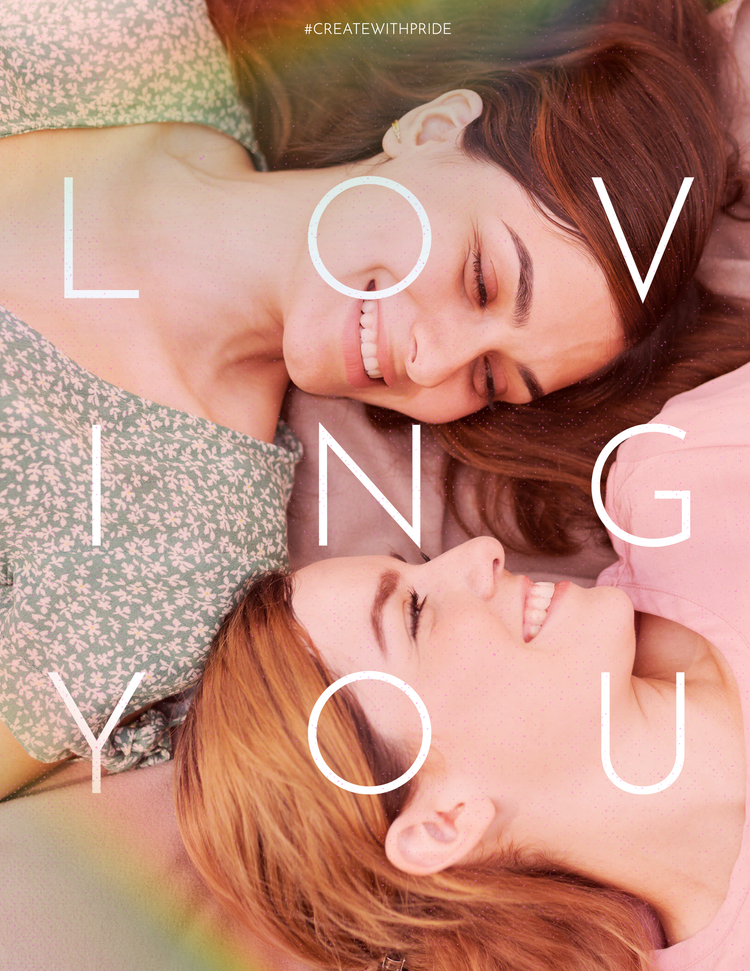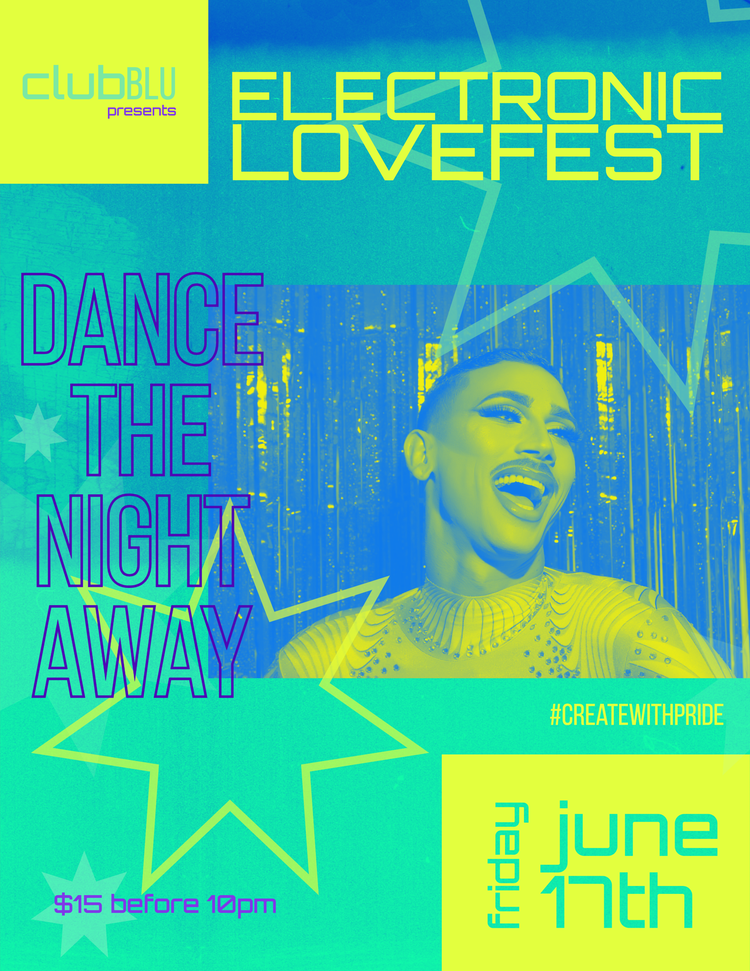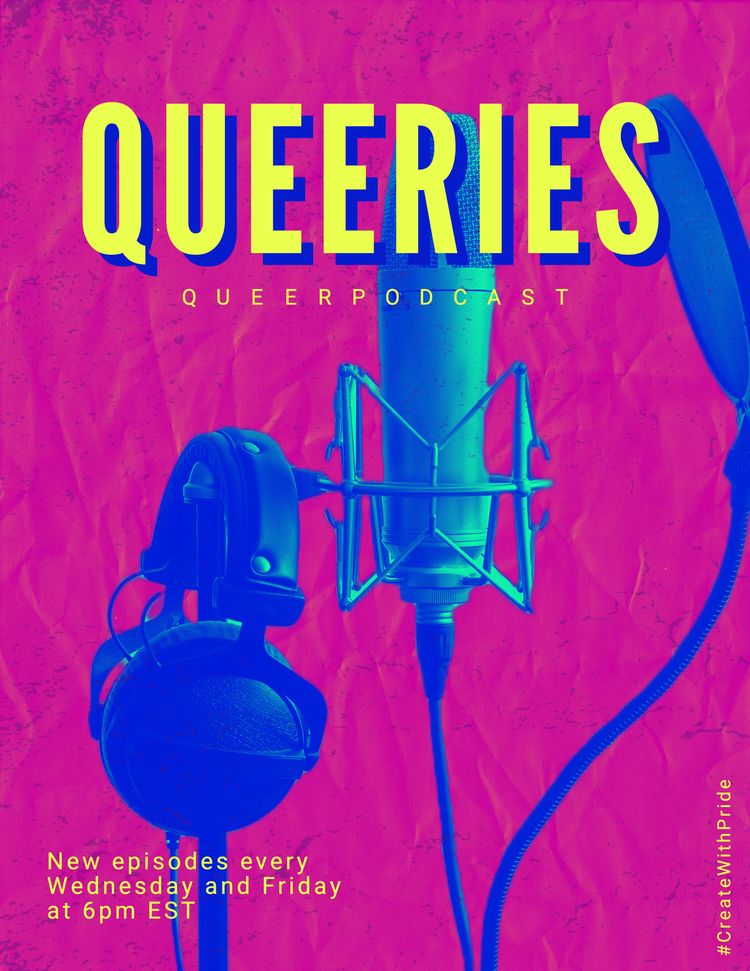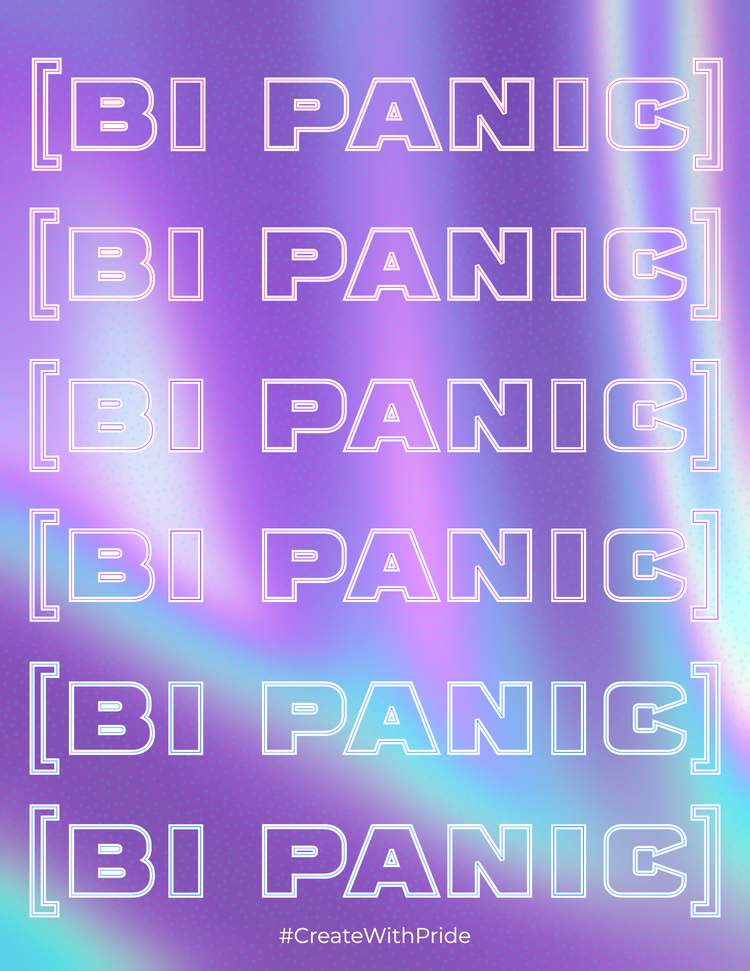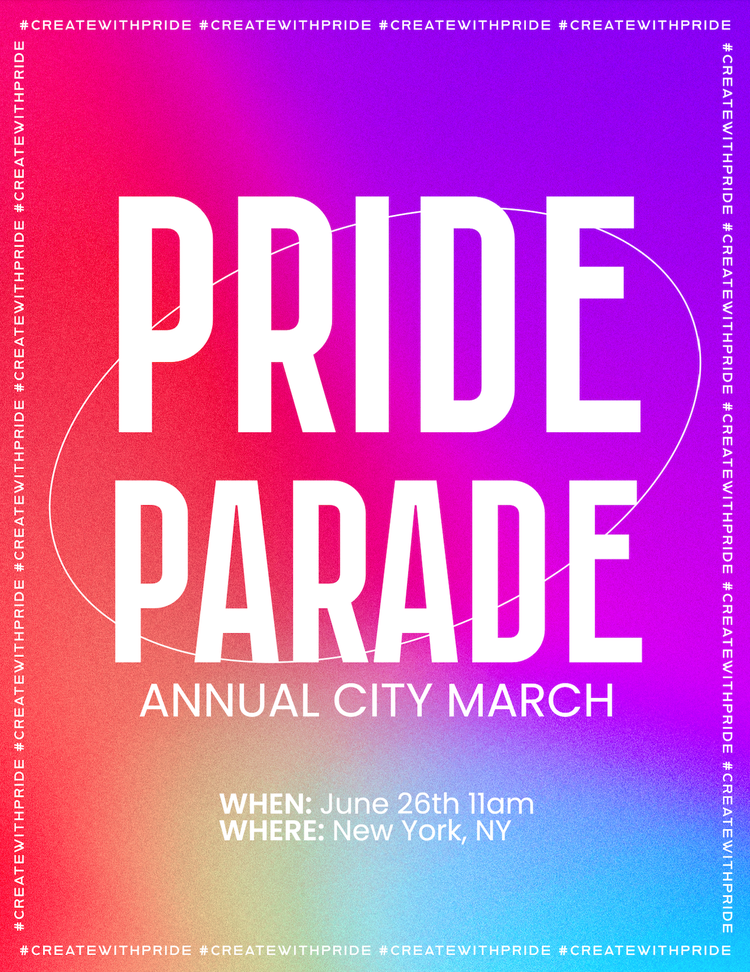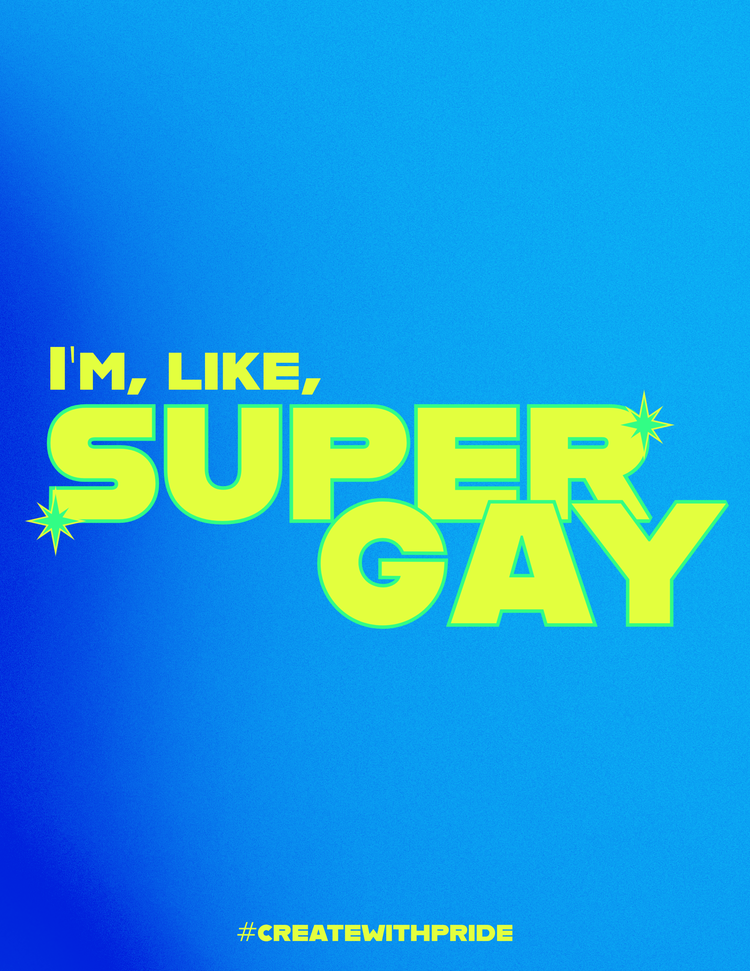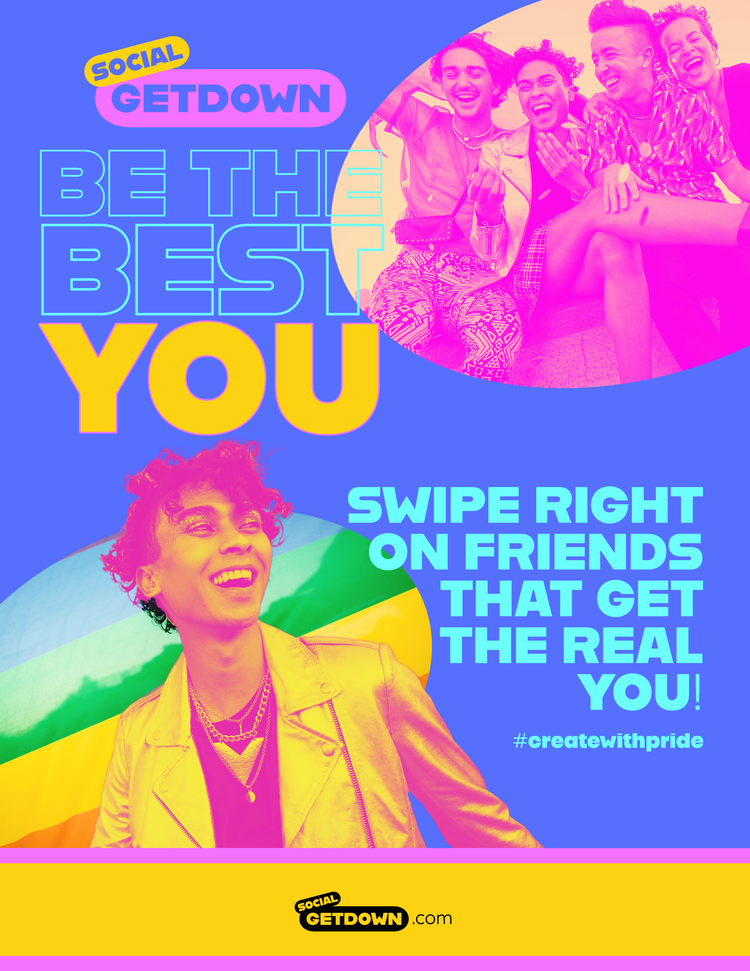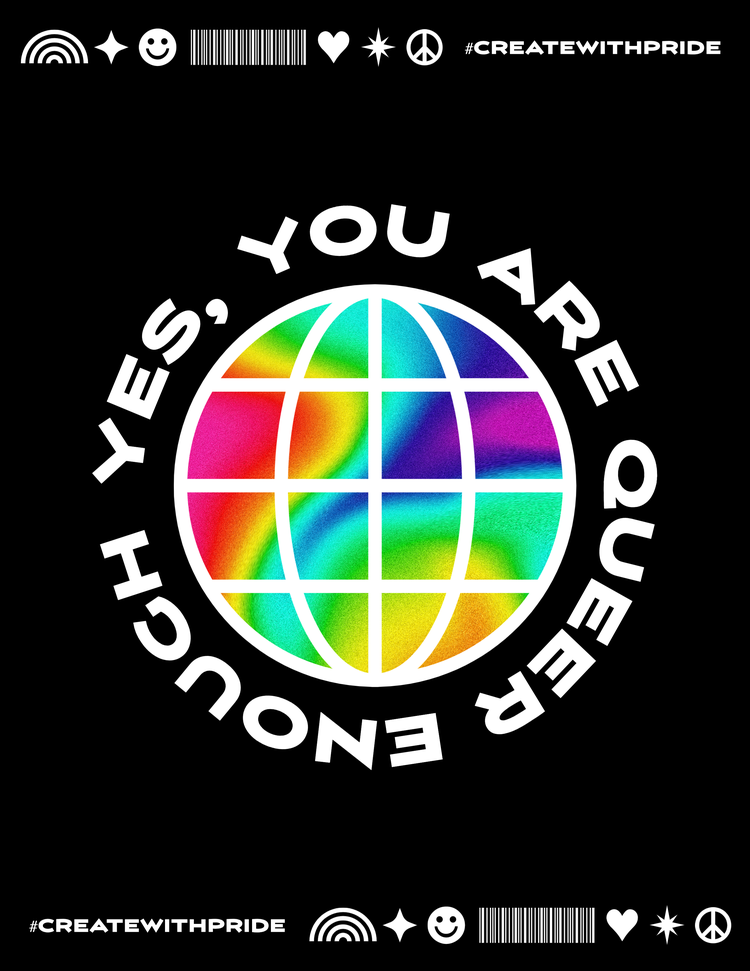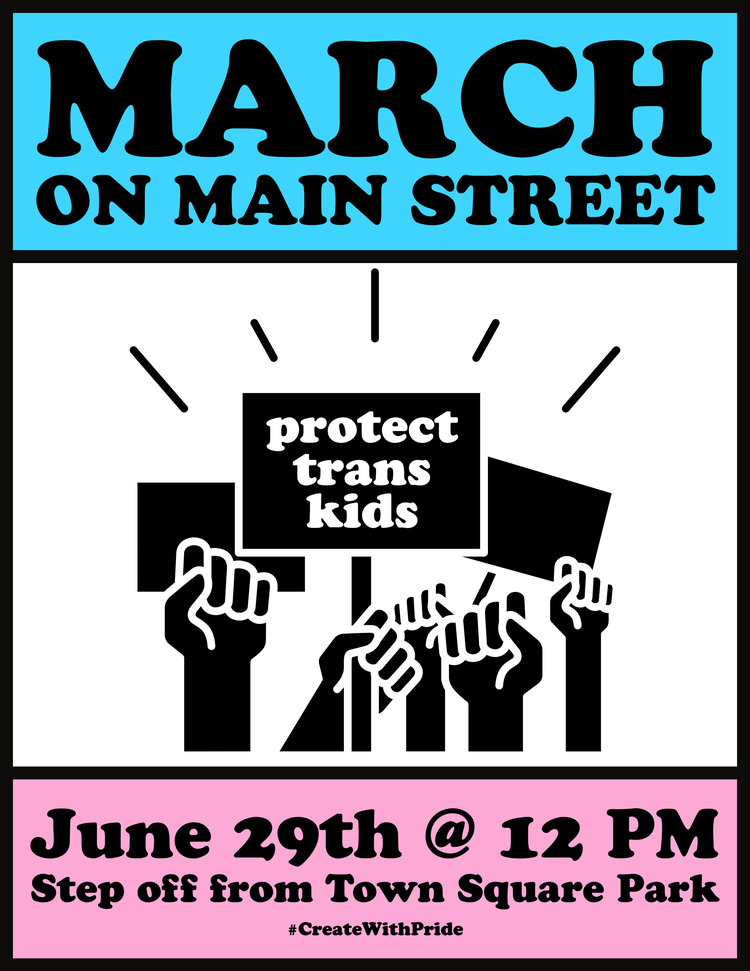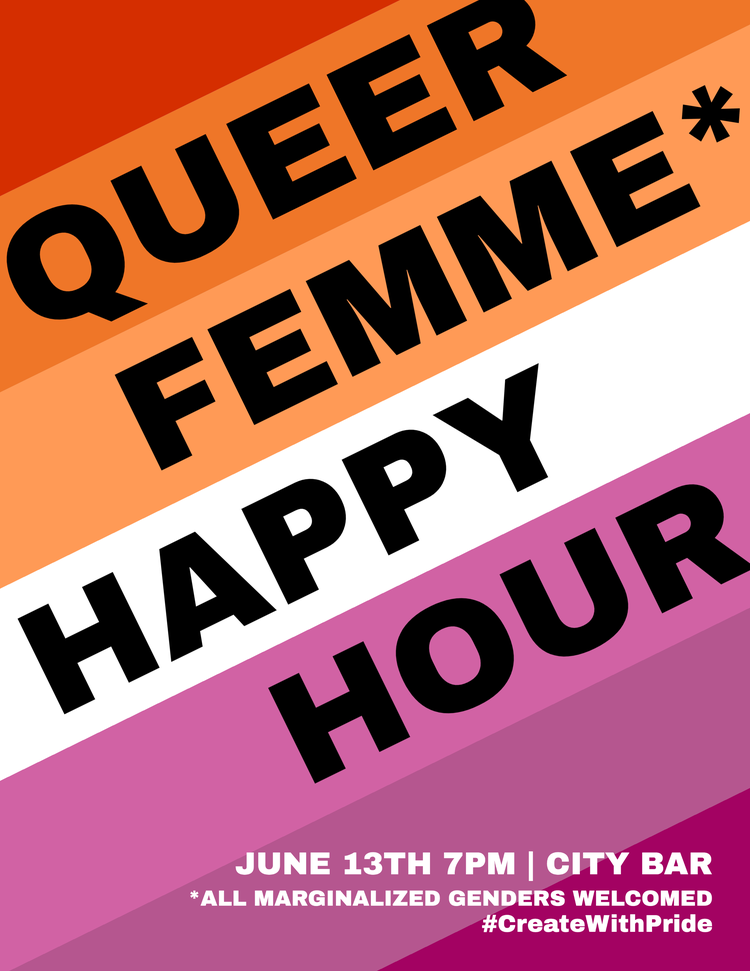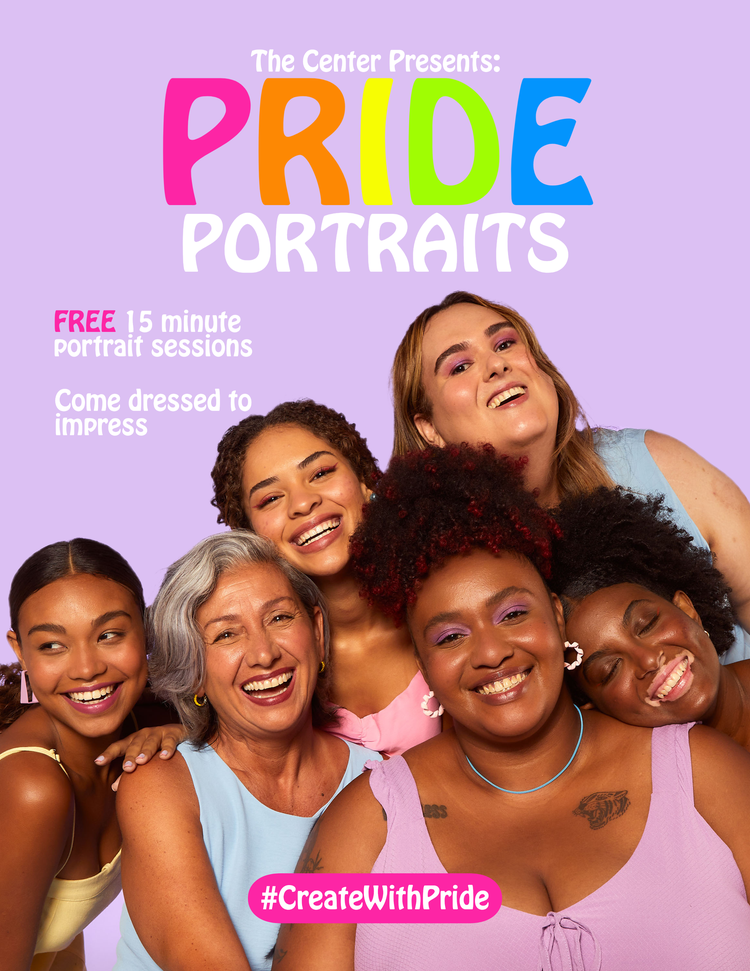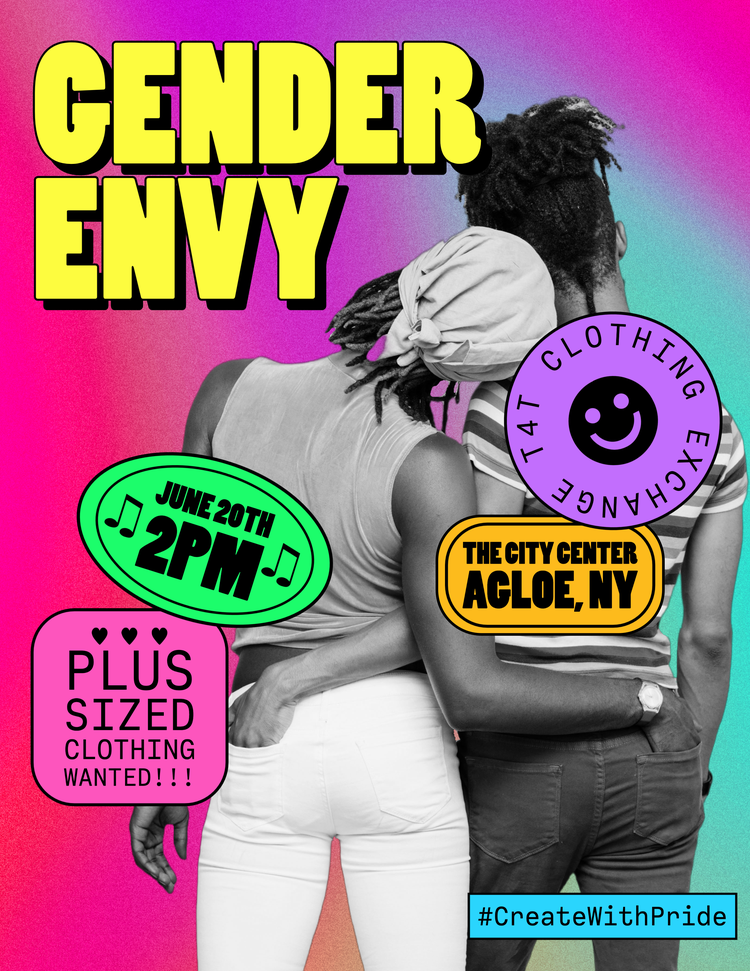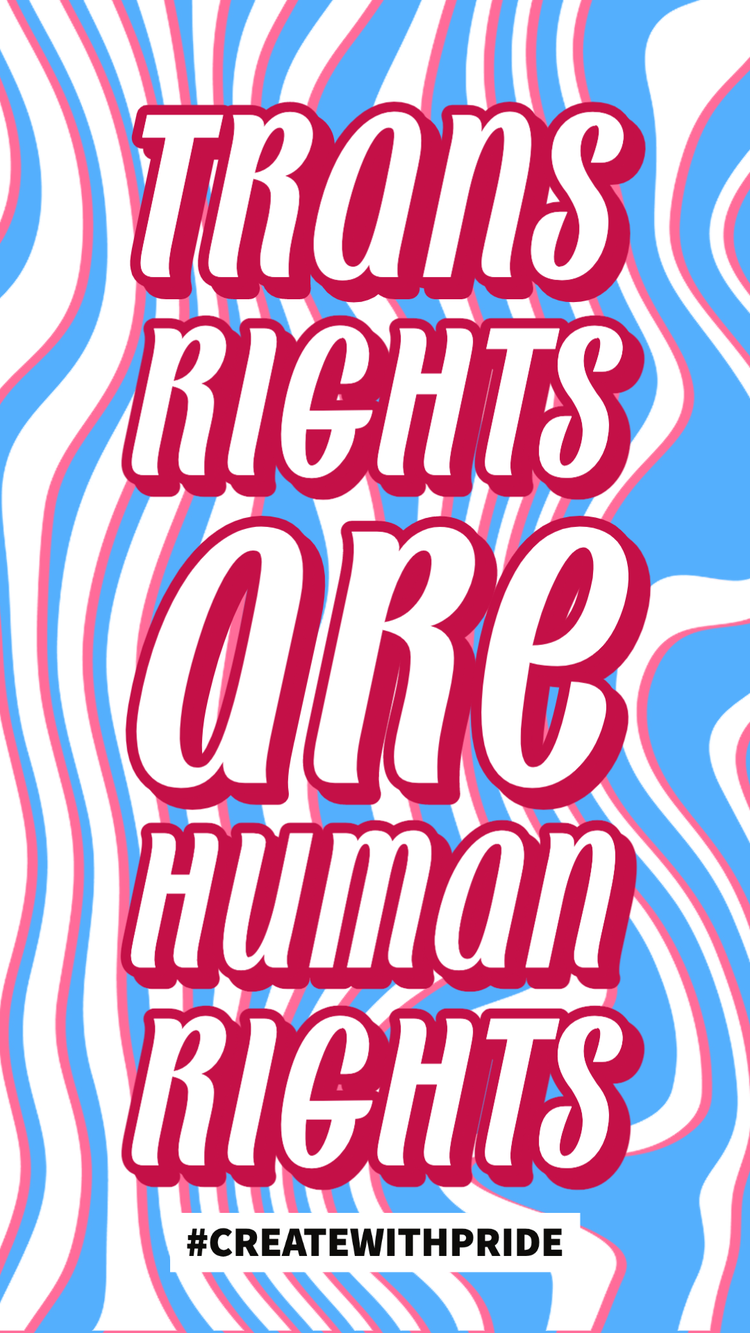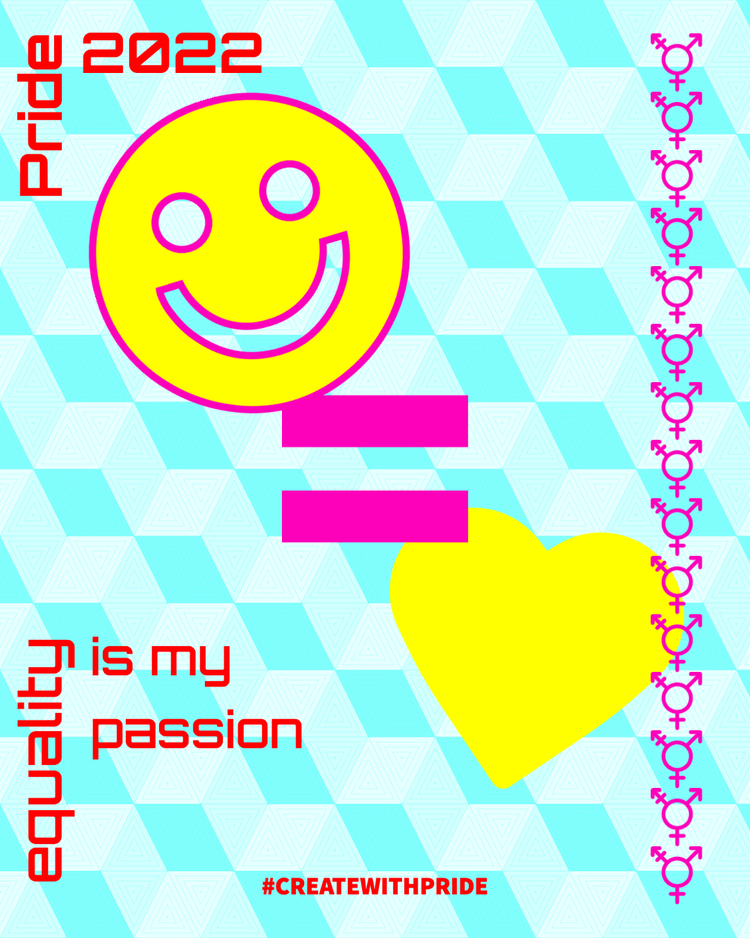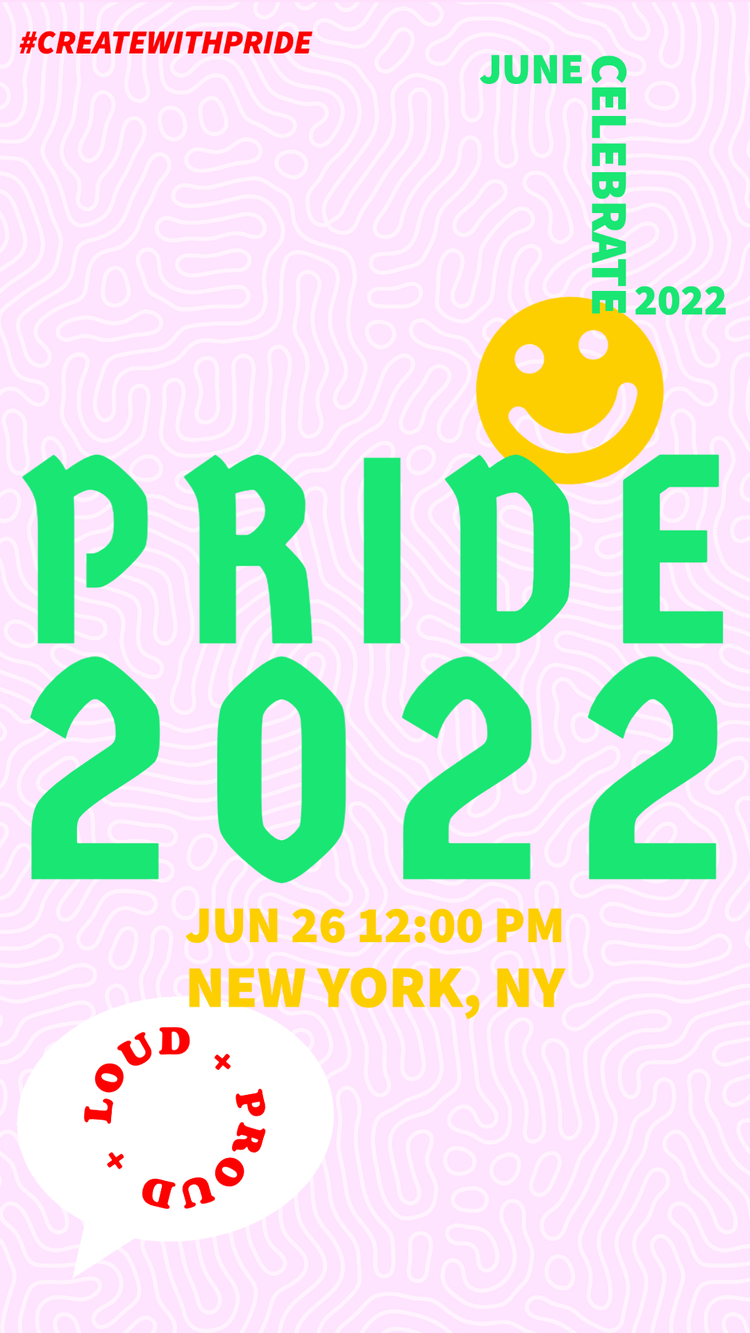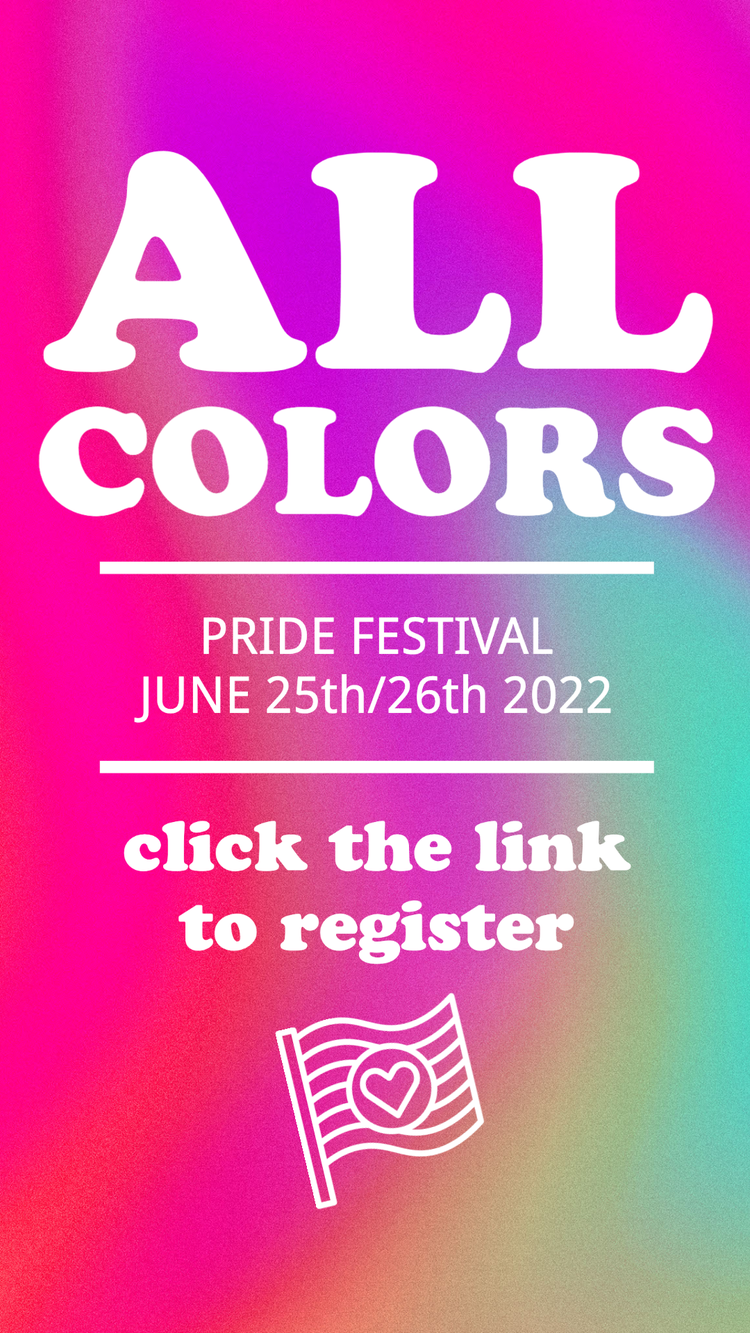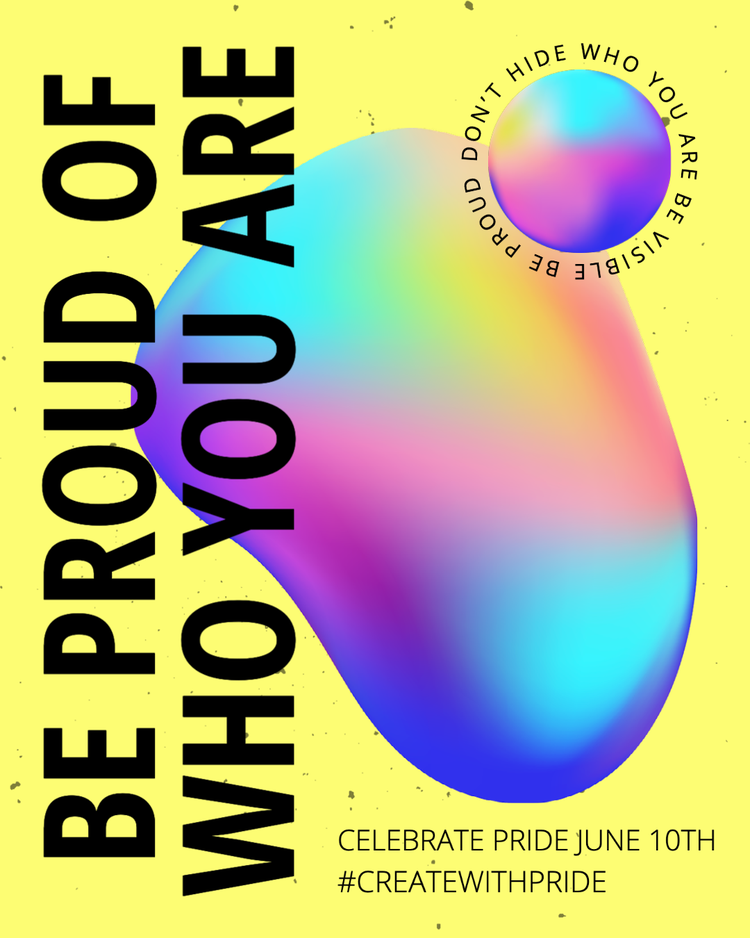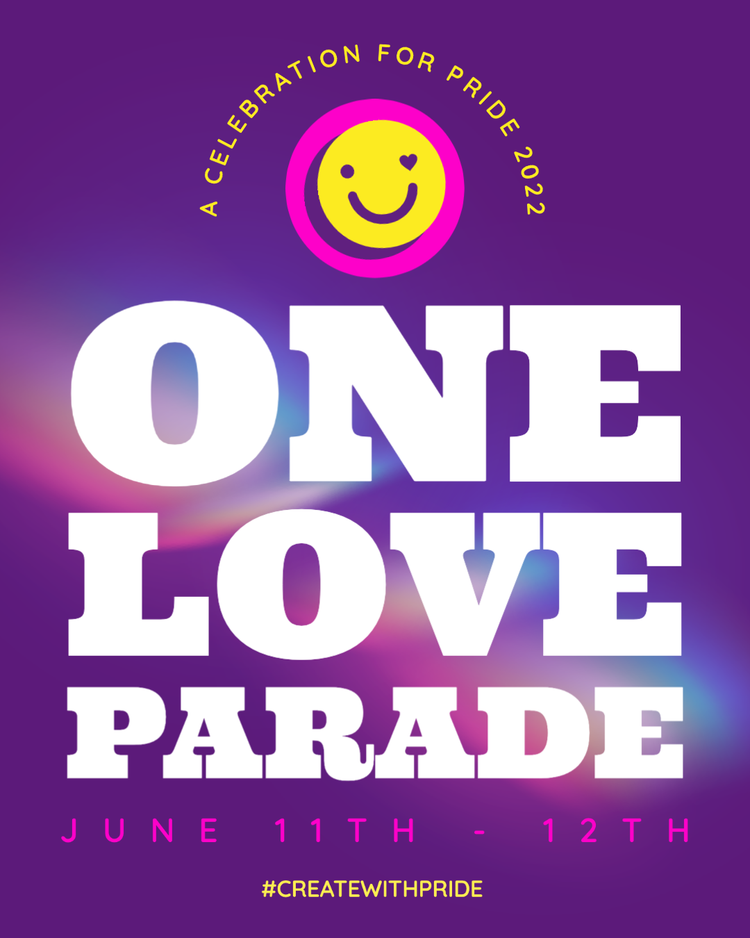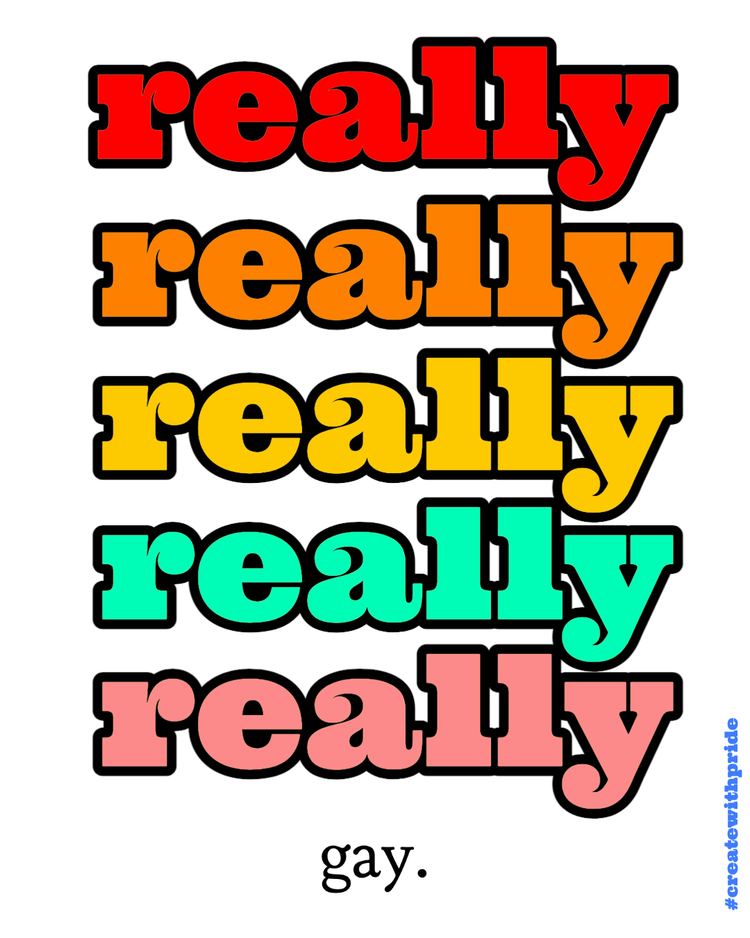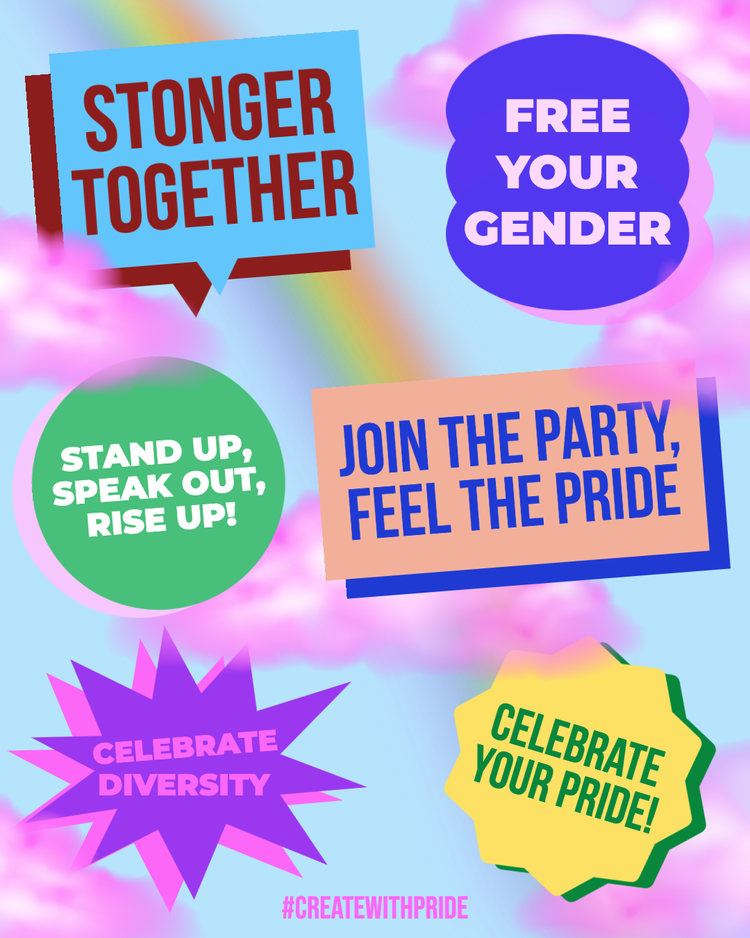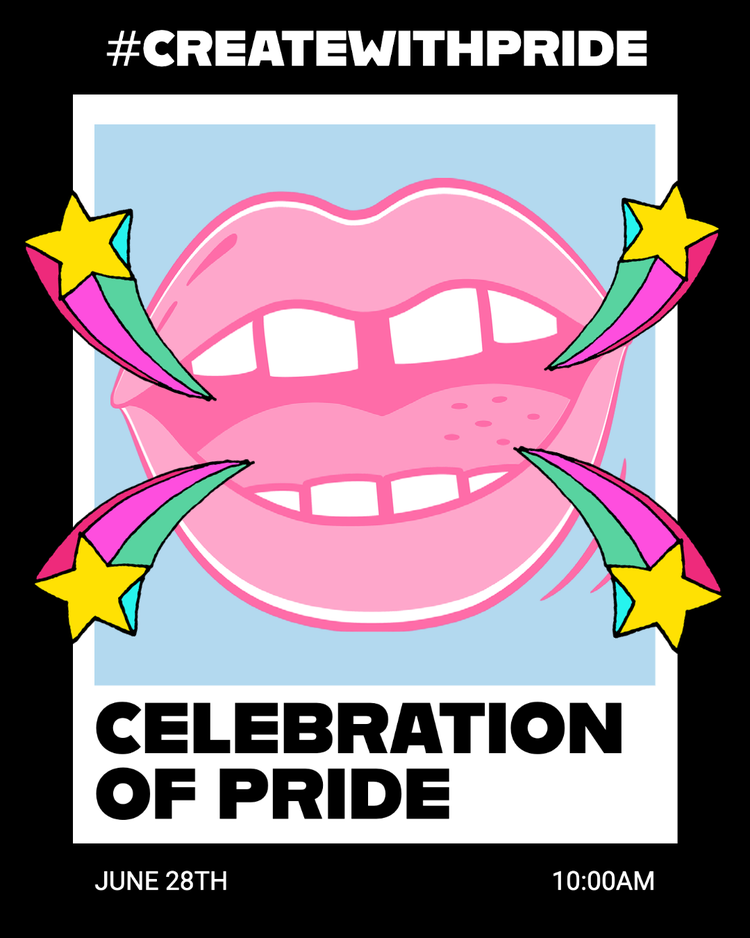Create with Pride 2022 using our free flyer templates
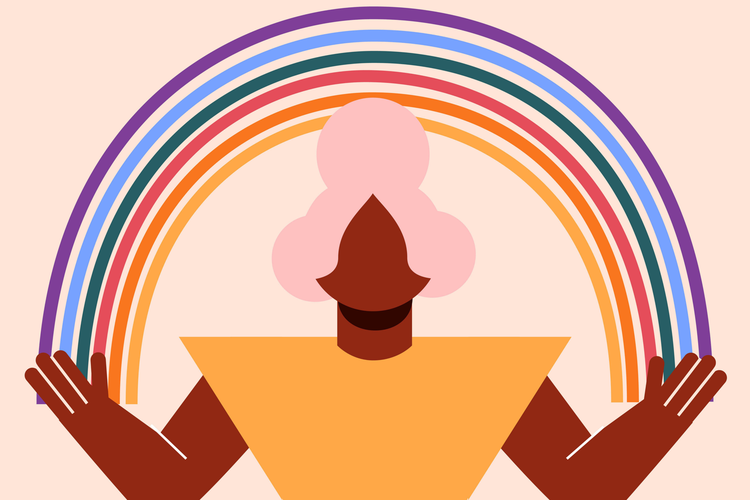
Art has long provided LGBTQIA+ people a means to point out injustices, appeal for human rights, and celebrate the beauty within their community. Over the decades, the LGBTQIA+ equality movement has experienced both triumph and backlash. Through it all, flyers have served as inexpensive and effective ways to get the word out about political marches, fundraisers, parties, community health programs, art shows, and anything else the community needed to know.
This Pride Month, Adobe Express explores the central role that graphic design, posters, and flyers have played in the LGBTQIA+ rights movement. This blog post spotlights several historical posters and flyers that represent key moments, people, and organizations that have been momentous in the fight for LGBTQIA+ equality. We chose flyers that recognize the diversity and intersectionality of the queer community, as well as show off the evolution of graphic design over the decades.
Flyers are still a popular way for the queer community and its allies to communicate. That’s why we asked queer icon Joey Jay (@joeyjayisgay) to create her own flyer template in Adobe Express. We’ve also tapped folks on the internal Adobe Express design team to create flyer templates that show off their 2022 Pride aesthetic. Finally, we’ve curated additional LGBTQIA+ flyer templates that you can customize right in the app. All templates featured in this post are available for free.
Now, let’s dig into queer history with our gallery of historically significant flyers from the movement for LGBTQIA+ rights.
Historic LGBTQIA+ flyers
1960s: “Homosexuals are Different” flyer by the Mattachine Society
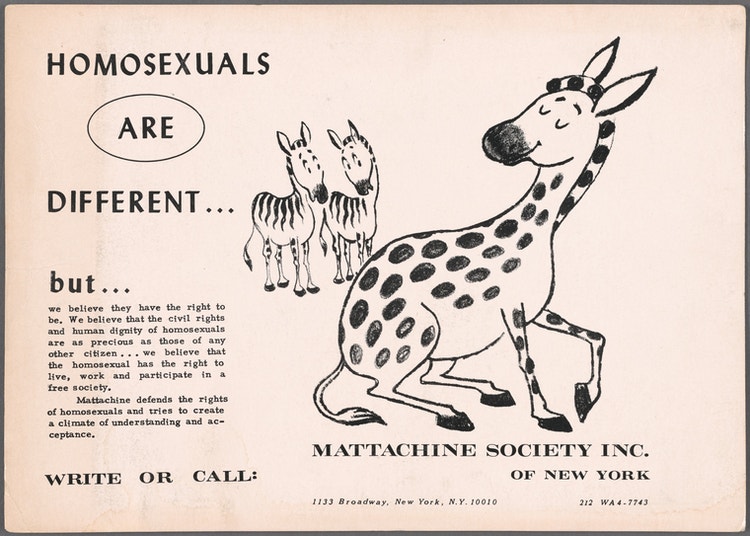
Following World War II but prior to the Stonewall Uprising, a social-political movement for gay and lesbian rights called the Homophile Movement was born. The Mattachine Society and the Daughters of Bilitis were founded at the birth of the Homophile Movement and were some of the first gay rights organizations with a national reach in the United States. The movement and these organizations aimed to build support from respected people in authority and strove to dispel the prevailing myths that stigmatized gay people. The groups used pamphlets, publications, and flyers like this one to spread these initial messages of acceptance. (Citation 1, Citation 2)
1970: Christopher Street Liberation Day flyer
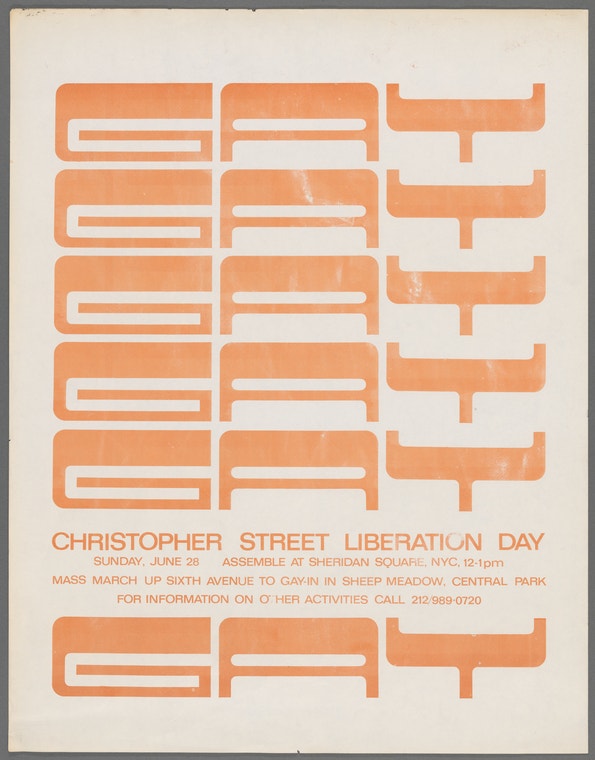
This flyer is from the first Christopher Street Liberation Day march held in New York City on June 28, 1970, the predecessor of current LGBTQIA+ Pride parades across the globe. LGBTQIA+ activists in the 1960s had organized small marches at Independence Hall in Philadelphia calling for equal rights, but in 1970 the protest was moved to New York City to help commemorate the first anniversary of the Stonewall Uprising. The new Christopher Street Liberation Day march had thousands of attendees and marked the arrival of a new generation of LGBTQIA+ activists demanding not just rights, but liberation. (Citation 3, Citation 4).
1970: “All Women’s Dance” flyer by the Gay Liberation Front
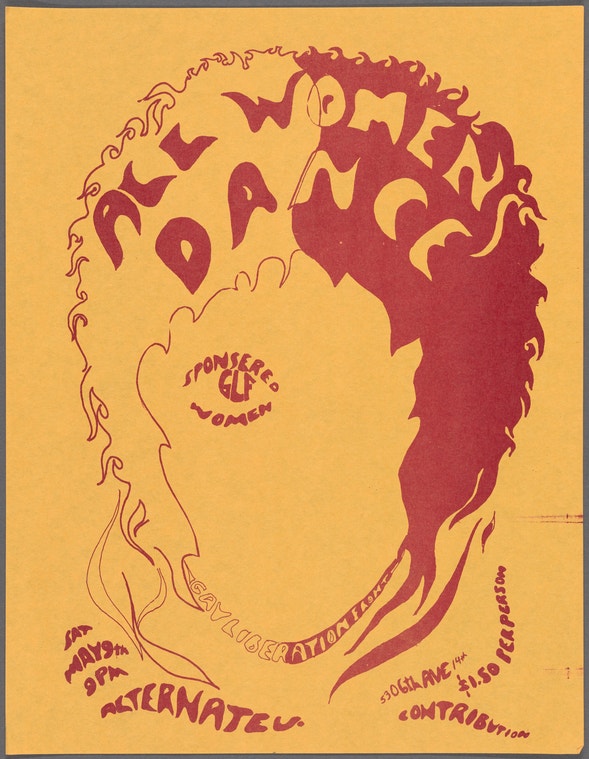
Following the Stonewall Uprising in 1969 where a group of gay men, lesbians, drag queens, and transgender women at the Stonewall Inn bar in New York City resisted a police raid, many LGBTQIA+ activists were radicalized. The Gay Liberation Front (GLF) first formed in NYC in 1969 and was a coalition of radical gay liberation groups that formed immediately after the Stonewall Uprising.
The featured flyer for an “All Women’s Dance” held in 1970 by the Gay Liberation Front is significant as the dance presented an opportunity for lesbians to develop a sense of community and meet separately from men. At the time, members of the same sex were banned from dancing with one another. In addition to this constraint, lesbians also contended with sexism within queer groups like the Gay Liberation Front. The dance subverted homophobic laws and carved out a safe space for female members of the community. Several GLF women went on to form the Lavender Menace, a lesbian activist organization.
Another offshoot of the GLF occurred during the early days of the group when Marsha P. Johnson and Sylvia Rivera pushed for the inclusion of trans, sex worker, and LGBTQIA+ street youth rights in their activism. Johnson and Rivera would later form Street Transvestite Action Revolutionaries (STAR) in 1970 to expand the movement to include the most marginalized members of the queer community. (Citation 5, Citation 6, Citation 7, Citation 8)
1976: Stonewall Uprising Anniversary flyer
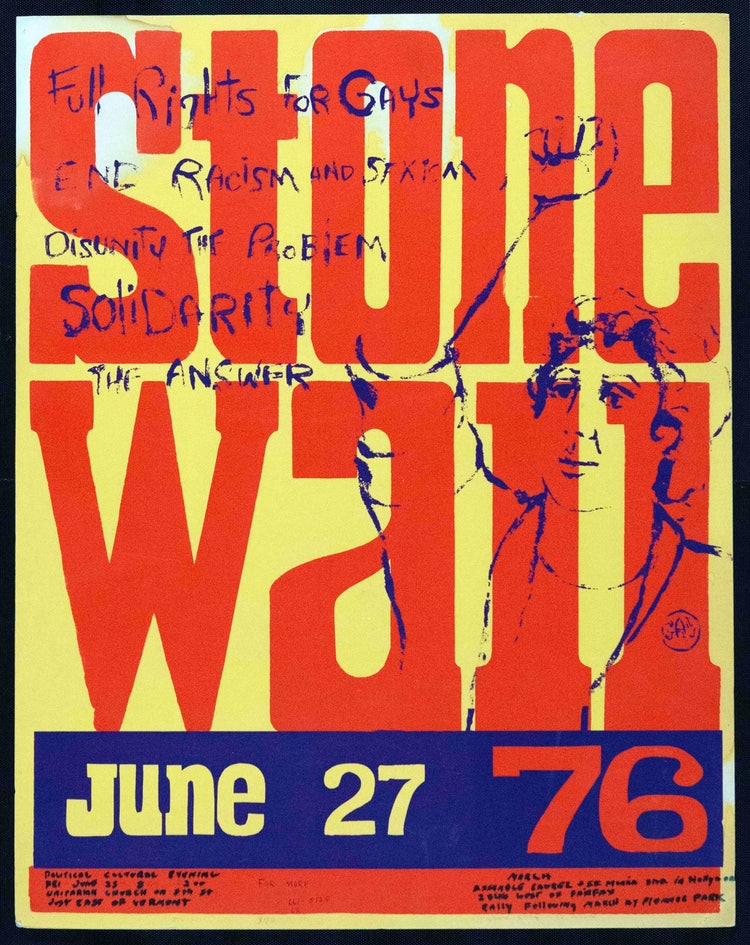
This flyer for an event seven years after the Stonewall uprisings in Greenwich Village, New York City acknowledges the tensions that existed (and still exist) within the LGBTQIA+ community. The Stonewall Uprising was led by trans and queer people of color, groups which have been historically excluded from the discourse in favor of the simpler message of “unity.” This flyer reminds the queer community that solidarity—and an end to racism and sexism—is the true path forward to equality. (Citation 9, Citation 10)
1987: “Silence = Death” flyer by Silence = Death Project and ACT UP
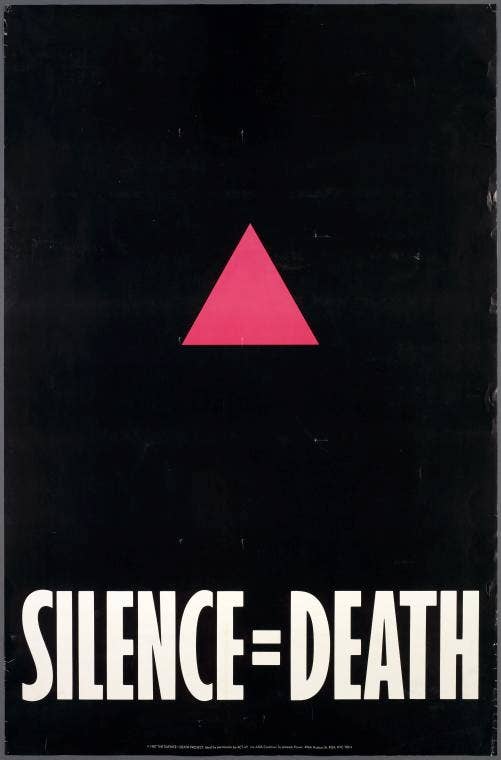
The Silence = Death Project was founded during the AIDS crisis as a consciousness-raising group and as a means of mutual support. While crafting their iconic design, the group intentionally used abstract language in the hopes of reaching multiple audiences. They utilized the pink triangle, a symbol known for its association with the persecution of homosexuals in Nazi Germany in the 1930s and 1940s. The group plastered this flyer all around New York City.
The flyer was then used by the AIDS Coalition to Unleash Power (ACT UP) as a central image in their activist campaign to foster awareness and solutions for the AIDS epidemic. ACT UP was an international, grassroots political group working to bring awareness about AIDS, counter the social stigma that prevented those affected from getting appropriate care, and give the community a stronger sense of mutual support and identity. (Citation 11, Citation 12, Citation 13, Citation 14)
Free Pride flyer templates
Joey Jay’s free Pride flyer template
Now that we’ve explored some highlights in the history of LGBTQIA+ graphic design, let’s see how the contemporary community continues the tradition of queer expression through visual media. You may know the drag queen Joey Jay from her stint on RuPaul’s Drag Race or from her live performances touring all over the world. We asked Joey to create her own flyer template for Pride 2022 using Adobe Express. We’re thrilled with her creation, which you can customize to make all your own. Werk, Joey Jay.
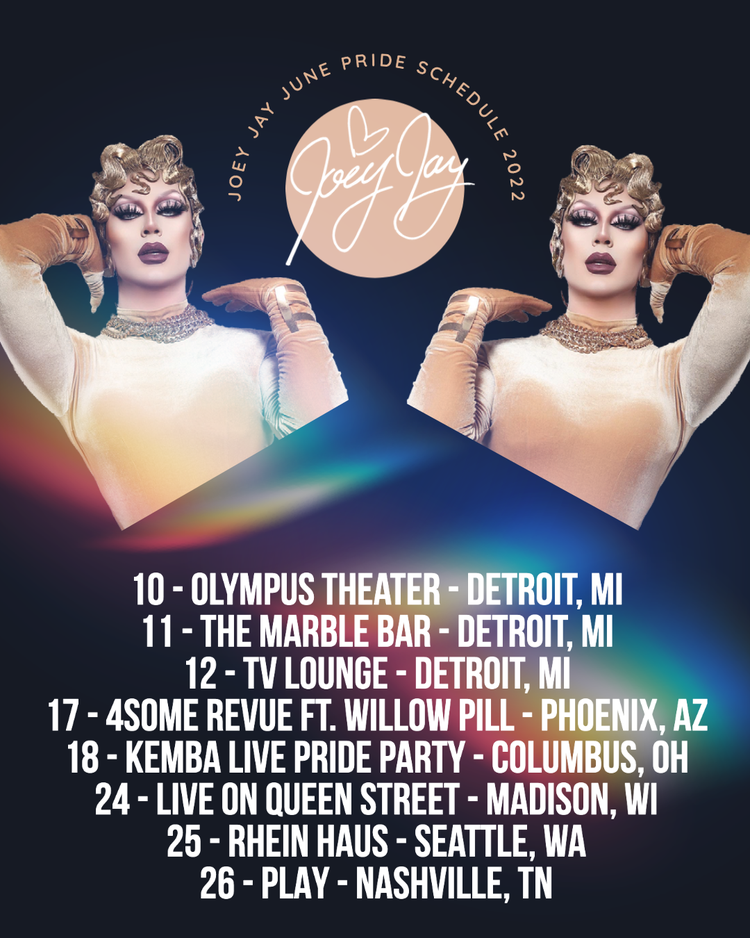
Free Pride flyer templates from the Adobe Express team
Members of the Adobe Express design team created these special #CreateWithPride flyer templates. Remix their templates to make them your own.
More free Pride flyer templates
Feeling inspired to make your own gay Pride design? Check out Adobe Express’s curation of free LGBTQIA+ templates below for inspiration. Next, remix and customize the templates for free.
Happy Pride from Adobe Express
Thank you for taking this journey with us into LGBTQIA+ history. Adobe Express wants to empower the next generation of creators to make it possible for everyone to quickly and easily design impactful — and fun — projects. Hot tip: if you want to show your pride on social media, hop over to our blog post "50 LGBTQ Pride month social media caption ideas and Pride quotes” for inspiration and free Pride social media templates.
We can’t wait to see what you create this Pride and all year long.
